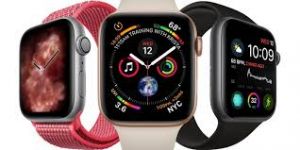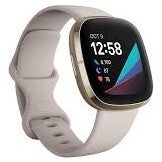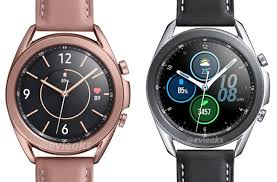The history of horology (clockmaking) has always been about the smart watch, and not just telling the time. First came lavish sundials, then elaborate clocks and pocket watches and, in the 1980s, technology brought us digital watches with calculators and beeping alarms. Quite literally, it’s always been about the extra bells and whistles!
Modern smart watches are a like having a computer on your wrist, and have advanced significantly in recent years. The most recent crop of releases are packed to the brim with sensors, bringing a host of features to users’ wrists.
But with so many watches to choose from, each boasting an array of high-tech features, before you buy it pays to do your research.
Major tech brands are leading the charge in bringing new models to market. Among the standout features of recent smart watch releases are built-in health and fitness capabilities, and enhanced integration and functionality with compatible smartphones … which is a good place to start.
For when buying a smart watch, smartphone compatibility should be your top consideration. Only then should you zero in on the core features on offer, before weighing up the importance and potential usefulness of secondary features.
Smart watch features and factors to consider
It can be easy to get lost in the myriad features that smart watches now offer. But it pays to take the time to consider whether you’ll actually use them.
This is an important process to go through prior to purchase. And by singling out the features that matter to you, you’ll be able to quickly work out how much you’ll need to spend.
With this in mind, the following are some of the primary features that you should look out for when shopping for a smart watch.
Operating system and smartphone compatibility
Smart watches are designed to pair and work in conjunction with compatible smartphones, so it’s worthwhile determining the exact compatibility requirements. For example, the Apple Watch series (running Apple’s watchOS operating system) only works with compatible iPhones.
Meanwhile, Samsung’s Galaxy Watch line runs the Tizen operation system, while other manufacturers use Google’s Wear OS system. Note that both Tizen and Wear work with apps that are compatible on both Android and iPhones smartphones.
Of course, each operating system has its own unique features, range of apps and interface, which includes configuration options, such as choosing watch faces. Also how information is presented, from news and weather alerts, to health and fitness updates, along with messaging.
Health and fitness
The current generation of smart watches has seen a heavy emphasis placed on health and fitness features. Features include: GPS, heart-rate monitors, blood-pressure monitors and accelerometers (used for tracking movement, including sleep tracking).
These sensors are supported by a range of interactive apps, providing insights into the user’s health and fitness activities. These allow users to track their key metrics across different activities, and get guidance and feedback.
Many of these features are active around the clock, and can be configured to provide users ongoing updates.
Smart watch connectivity
Smart watches use various methods to establish connections and interact with other compatible devices, and to connect directly to the internet.
They typically connect and communicate with smartphones via Bluetooth, and may use wi-fi when Bluetooth is unavailable. Meanwhile, wi-fi allows for direct connection to the internet, as does LTE (also referred to as cellular or 4G, connecting to mobile networks).
Among the other wireless technologies to look out for is NFC, which allows for wireless functions such as contactless payments.
Design and durability
From the case to the wristband, it’s important to choose a model that you feel comfortable wearing. So make sure you try it on before you buy.
Most smart watches sport a touchscreen display, so it’s worthwhile considering the range of physical controls (such as buttons and dials), as these can have a significant impact on ease of use.
It’s also important to keep durability in mind. Water resistance a key feature to look out for. And if you plan on using your smart watch for outdoor activities that involve lots of dirt, knocks and scrapes, you’ll need to pick one that’s tough enough for the job.
Smart watch: under the hood
In assessing smart watch hardware components, battery life should be a priority. It’s important to keep in mind that different applications can contribute significantly to the time required between charges. For example, GPS-related features can be a significant battery drain.
Also related to battery life, it’s worthwhile keeping in mind the time it needs for a full charge.
Meanwhile, the processor and RAM available will impact speed and the smoothness of performance. And greater internal storage means more apps can be downloaded and media (such as music) stored.
Recent smart watch releases
The following is an overview of some recently released smart watches and a selection of their headline features. Many of these smart watch models are available in a range of configurations and colours, which will have a bearing on price.
It is, of course, worthwhile shopping around and weighing up the range of options on offer, including assessing the full scope of features provided by respective smart watch models.

Apple Watch Series 6
Apple has introduced a number of new features with its Apple Watch Series 6. It arrived to market with a strong focus on health and fitness capabilities, underpinned by a range of hardware improvements.
The Apple Watch Series 6 sports a blood oxygen sensor and an electrical heart sensor, accompanied by supporting apps. These deliver a range of health insights, and allow for tracking of workout metrics across a variety of activities, including running, swimming and cycling.
Apple Watch Series 6 features include:
- Operating system – watchOS 7.
- Smartphone compatibility – iPhone 6s or later with iOS 14 or later.
- Connectivity – Bluetooth 5.0; wi-fi (2.4 GHz and 5 GHz); LTE (selected models); NFC.
- Design and durability – a 40mm x 34mm, or 44mm x 38mm case size; an always-on Retina LTPO OLED display; a range of cases and wristbands; water resistance to 50m.
- Under the hood – battery life of up to 18 hours (completing a full charge in under 1.5 hours); an S6 SiP with 64-bit dual-core processor; 32GB internal storage.
Price: On the Apple website, pricing for the Apple Watch Series 6 (GPS) starts at $699, and at $899 for the Apple Watch Series 6 (GPS + Cellular). There are a number of different configurations to choose from*.
Samsung Galaxy Watch3
Samsung’s Galaxy Watch3 builds on the capabilities of previous generations. It incorporates a variety of health and fitness features, and is designed to seamlessly integrate into Samsung’s wider ecosystem of Galaxy devices.
The Galaxy Watch3’s blood oxygen feature allows users to measure and track oxygen saturation. It boasts an enhanced accelerometer capable of automatically detecting hard falls, while its fitness features include over 120 home workout programs.
Galaxy Watch3 features include:
- Operating system – Tizen 5.5.
- Smartphone compatibility – Android 5.0 or later, with more than 1.5GB RAM; iPhone 5 or later models with iOS 9.0 or later.
- Connectivity – Bluetooth 5.0; wi-fi 2.4GHz; LTE (selected models); NFC.
- Design and durability – a 41mm stainless steel case (30mm display) or 45mm stainless steel case (34mm display); a 360 x 360 Super AMOLED, full colour always-on display, Corning Gorilla Glass DX; rotating bezel; leather strap; a water resistance rating of 50m.
- Under the hood – 45mm models: 340mAh battery; 41mm models: 247mAh battery; an Exynos 9110 dual-core 1.15GHz processor; 1GB RAM and 8GB internal storage.
Price: The Samsung website lists the Galaxy Watch3 Bluetooth (41mm) priced at $669. Galaxy Watch3 4G (41mm) $769. Galaxy Watch3 Bluetooth (45mm) $719. Galaxy Watch3 4G (45mm) $818.99*.

Fitbit Sense
Fitbit promotes its recently released Fitbit Sense smart watch as an “advanced health smart watch”. Its sensor and software technology delivers features providing health and wellness insights.
The Sense sports an electrodermal activity sensor, designed to help with stress management, heart-rate tracking technology and an on-wrist skin temperature sensor. There is also all-day activity tracking and 20-plus exercise modes that provide users real-time statistics during workouts.
Sense features include:
- Operating system – Fitbit OS.
- Smartphone compatibility – Android 7.0 or higher; iOS 12.2 or higher.
- Connectivity – Bluetooth 5.0; wi-fi 2.4GHz; NFC.
- Design and durability – a 40.48mm x 40.48mm case size; a polished stainless steel ring, near edge-to-edge custom AMOLED display, laser-bonded Corning Gorilla Glass 3; always-on display mode; classic wristband (small and large included); water resistant to 50m.
- Under the hood – battery life of up to six-plus days (charge time: 10% to 80% in approximately 40 minutes; fast charging: one day of battery life in 12 minutes).
Price – the Fitbit website lists the Fitbit Sense at $579.95*.
Garmin Venu Sq – Music Edition
Garmin’s Venu Sq – Music Edition smart watch combines music storage capabilities (allowing for smartphone-free music listening) with health and fitness functionality, incorporating a range of built-in monitoring features.
The smart watch is equipped with Garmin’s 24/7 Elevate heart rate monitoring, which constantly samples the user’s heart rate. Its Body Battery energy monitoring lets users monitor their energy level, and comes with more than 20 preloaded sports apps.
Venu Sq – Music Edition features include:
- Operating system – Garmin OS.
- Smartphone compatibility – Android and iOS.
- Connectivity – Bluetooth; wi-fi; ANT+.
- Design and durability – a 40.6mm x 37mm fibre-reinforced polymer case and anodised aluminium bezel; a 33.1mm display (240 x 240 pixels), Corning Gorilla Glass 3, with optional always-on mode; silicone band; water-rated to 5 ATM.
- Under the hood – battery life of up to six days; music storage of up to 500 songs.
Price – the Garmin website lists the Venu Sq – Music Edition as priced at $469*.
*Further information on pricing can be found at individual retailer websites. This should be used as a starter guide and not considered an actual quote.
Ultimately a smart watch needs to access the internet, via your phone or broadband connection. And to help Kiwi consumers make more informed decisions about their broadband options, Canstar Blue annually rates all the providers in the market. We survey thousands of broadband customers and ask them to score their providers across categories including Overall Satisfaction, Value for Money and Customer Service.
Canstar Blue’s 2020 review of NZ internet providers compares NOW, 2degrees, Bigpipe, Contact, MyRepublic, Orcon, Skinny, Slingshot, Spark, Stuff Fibre, Trustpower, Vodafone and Voyager, and awards the best our 5 Star rating:
^ By clicking on a brand or 'details' button, you will leave Canstar Blue and be taken to either a product provider website or a Canstar Blue NZ brand page. You agree that Canstar Blue NZ’s terms and conditions apply (without limitation) to your use of this service,to any referral to a product provider from our website, and any transaction that follows. Canstar Blue may earn a fee for referrals from its website tables, and from sponsorship (advertising) of certain products. Payment of sponsorship fees does not influence the star rating that Canstar Blue awards to a sponsored product. Fees payable by product providers for referrals and sponsorship may vary between providers, website position, and revenue model. Sponsorship fees may be higher than referral fees. Sponsored products are clearly disclosed as such on website pages. They may appear in a number of areas of the website such as in comparison tables, on hub pages and in articles. Sponsored products may be displayed in a fixed position in a table, regardless of the product’s rating, price or other attributes. The table position of a sponsored product does not indicate any ranking, rating or endorsement by Canstar Blue. See How we are funded for further details.
Canstar Blue NZ research finalised in May 2024, published in June 2024.
See Our Ratings Methodology
The table above is an abridged version of our full research, so to find out more about NZ’s best broadband providers, just click on the big button below:
Compare broadband providers for free with Canstar!
Enjoy reading this article?
You can like us on Facebook and get social, or sign up to receive more news like this straight to your inbox.
By subscribing you agree to the Canstar Privacy Policy




Share this article